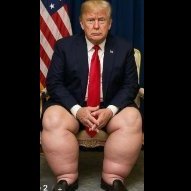Questions About Fender Strat 57' Reissue Made In Japan
-
Recently Browsing 0 members
- No registered users viewing this page.
-
Topics
-
-
Popular Contributors
-
-
Latest posts...
-
241
Crime Drunk Brit Attacks Bar Worker, Hurt by American Customer
Most definitely....555 -
6
Crime Singapore Tourist Arrested for Flying Drone on Walking Street
It seems like the government has not made the law publicly known to tourists. Why not have signs in the airport, at baggage carousels for instance? The police could put up flyers at hotels. It's like they think people should know without being told. -
82
USA Maxwell Clears Trump: DOJ Considers Releasing Interview
Take a deep breath and focus. This is about Trump only. -
43
Middle East Israel to 'Fully Occupy' Gaza: Hostage Safety Concerns Rise
Misinformation, I guess you are conveniently talking about Hamas' 1988 Charter which is no more. Hamas distinguishes between Jews as a people and the Israeli state, stating their conflict is with Zionism and occupation, not Judaism as a religion. This clearly refutes the claim that their aim is simply to “kill all Jews.” As for Israel “leaving” Gaza in 2005: it removed settlers and soldiers but kept total control over Gaza’s airspace, waters, borders, population registry, and trade. That’s not independence, it’s open-air incarceration. Even before October 7, Gaza was blockaded for nearly two decades, with regular bombardments, mass unemployment, and collapsing infrastructure - Israel controlled all materials going in. -
98
Alert! Bangkok Bank new rule money seasoning
Think I'm getting there....so I put the money in the bank as normal two months before......but then have to sign to keep it in there for four months in total. Well that is basically what I do now. Money goes in two months before application......then apply 30 days before due date.....and then keep it in there during the 30 days consideration = four months -
21
Democrats Democracy and what it looks like, Enterprising Criminals,Lawlessness of illegals..
I'd rather walk around Patayya with a nail in my flip flop then start worrying about the Dem party.
-
-
Popular in The Pub






.thumb.jpg.bc523c85a8d558dbc282dca7a2e602c9.jpg)


Recommended Posts
Create an account or sign in to comment
You need to be a member in order to leave a comment
Create an account
Sign up for a new account in our community. It's easy!
Register a new accountSign in
Already have an account? Sign in here.
Sign In Now